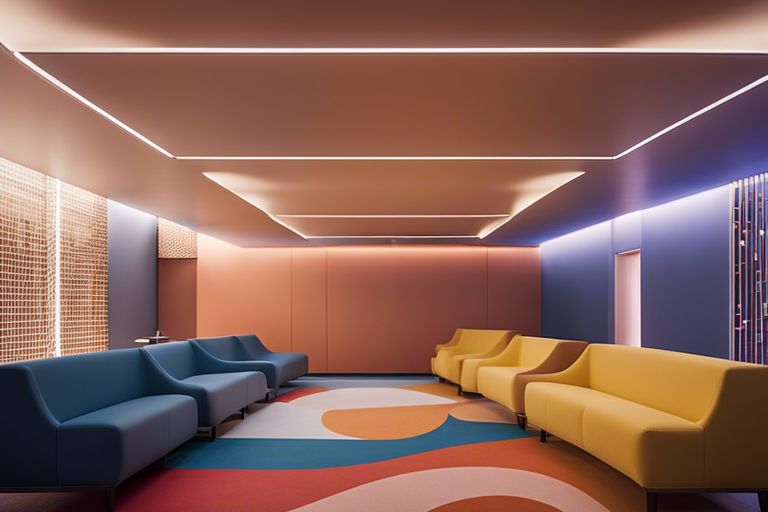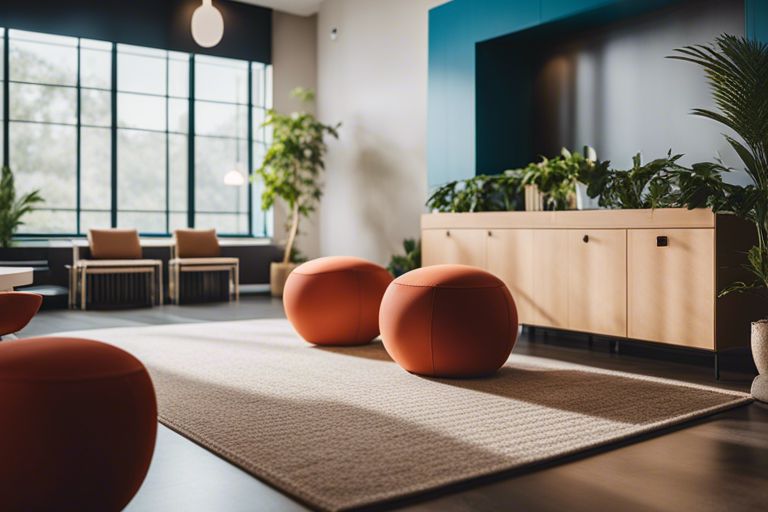Creating sensory-friendly environments is crucial for providing inclusivity and support for individuals with autism. For many people with autism, sensory sensitivities can lead to overwhelming experiences in everyday surroundings. Understanding and accommodating these sensitivities is key to promoting a welcoming and accessible environment. By taking simple yet effective steps such as reducing noise levels, providing quiet spaces, and considering lighting and texture preferences, we can make a significant difference in the lives of individuals with autism. It is important to recognise that creating sensory-friendly spaces is not just beneficial for individuals with autism, but for everyone, as it promotes a more inclusive and understanding society.
Key Takeaways:
- Understanding autism: Sensory-friendly environments accommodate individuals with autism by taking into consideration their sensory sensitivities and unique needs.
- Inclusive design: Creating inclusive spaces involves reducing sensory stimuli, providing quiet areas, using calming colours, and offering sensory tools to support individuals with autism.
- Community support: Collaboration with autism experts, receiving feedback from individuals with autism, and educating the community about autism are essential for establishing truly inclusive environments.
The Spectrum of Sensory Processing in Autism
Individuals with autism often experience a wide range of sensory processing differences that can significantly impact their daily lives. Understanding these variations is crucial in creating inclusive environments that cater to the diverse sensory needs of individuals on the autism spectrum.
Sensory Overload and Autism
Sensory overload is a common challenge faced by many individuals with autism. In environments with excessive stimulation such as bright lights, loud noises, strong smells, or crowded spaces, individuals on the spectrum can become overwhelmed. This can lead to increased anxiety, meltdowns, or shutdowns as the individual struggles to regulate their sensory input.
Repetitive behaviours, sensory seeking, or sensory avoiding are some ways individuals with autism may cope with sensory overload. They may engage in activities such as hand-flapping, rocking, or seeking out certain textures to either seek or avoid sensory stimuli. It is crucial to recognise these behaviours as communication of the individual’s sensory needs.
Sensory Processing Differences and Their Impact
Each individual with autism may have unique sensory processing differences, making it essential to tailor support to their specific needs. Some individuals may be hypersensitive and easily overwhelmed by sensory input, while others may be hyposensitive and seek out additional sensory stimulation to regulate their senses.
These sensory processing differences play a significant role in how individuals with autism experience the world around them. By creating sensory-friendly environments that accommodate these differences, we can help individuals on the autism spectrum feel more comfortable, supported, and included in various settings such as schools, workplaces, and public spaces.

Principles of Designing Sensory-Friendly Spaces
Key Features of Inclusive Environments
When designing sensory-friendly spaces, it is crucial to consider certain key features that promote inclusivity for individuals with autism and sensory sensitivities:
- Soft lighting: Gentle, non-flickering lighting helps create a calming atmosphere.
- Quiet areas: Designated spaces where individuals can retreat to reduce sensory overload.
- Minimal noise: Sound-absorbing materials and noise-reducing strategies to limit auditory distractions.
- Neutral colours: Avoiding bright, overwhelming colours in the environment.
- Clear signage: Easy-to-understand signs and visual cues for navigation.
Perceiving these features can significantly enhance the comfort and well-being of individuals with autism and sensory sensitivities in a variety of environments.
Considerations for Different Settings
When adapting spaces for individuals with autism and sensory challenges, it is essential to consider the specific needs of diverse settings. Whether it is a school, workplace, or public area, each environment requires tailored adjustments to ensure inclusivity. By taking into account factors such as noise levels, lighting, and layout, these settings can be transformed into accessible and comfortable spaces for all individuals.

Strategies for Creating Sensory-Friendly Environments
Modifications for Existing Spaces
When transforming existing spaces into sensory-friendly environments, consider making simple changes that can have a significant impact on individuals with autism. Modifications such as controlling lighting levels, incorporating soothing colours, reducing background noise, and providing designated quiet areas can help create a more welcoming and inclusive atmosphere.
Additionally, removing clutter, using visual schedules, adding sensory-friendly furniture and fixtures, and ensuring clear signage can enhance accessibility and reduce sensory overload in the space. These modifications can make a world of difference for individuals with autism and other sensory sensitivities.
Best Practices for New Construction and Design
When commenceing on new construction projects, it is essential to incorporate sensory-friendly design principles from the outset. This includes considering elements such as natural lighting, acoustic control, non-toxic materials, adjustable temperature settings, and access to outdoor spaces. By prioritising sensory needs in the initial design phase, you can create environments that are inherently inclusive and accommodating for individuals with autism.
Architects and designers should also consult with individuals on the autism spectrum and sensory experts to gain valuable insights into how to best optimise the environment for sensory comfort and well-being. By adopting a collaborative approach and staying informed about the latest research and best practices, new constructions can truly set the standard for sensory-friendly spaces.

Supporting Individuals with Autism: Practical Applications
Sensory-Friendly Initiatives in Public Spaces
Creating sensory-friendly initiatives in public spaces is crucial for accommodating individuals with autism. This can include dimming lights, reducing noise levels, providing sensory-friendly seating options, and offering quiet spaces for individuals who may become overwhelmed. Many businesses and organisations are embracing the importance of inclusive environments and implementing these changes to support individuals with autism.
Another key aspect of sensory-friendly initiatives is training staff members to understand the unique needs of individuals with autism and how to offer support when necessary. By increasing awareness and creating accepting environments, public spaces can become more welcoming and accessible for everyone.
Home and Classroom Modifications
When it comes to creating inclusive environments for individuals with autism, home and classroom modifications play a crucial role. This can involve creating designated sensory-friendly areas, using visual schedules and timers, and incorporating sensory tools like fidget toys or noise-canceling headphones. By making these adjustments, individuals with autism can feel more comfortable and focus better in their surroundings.
Furthermore, incorporating structured routines and clear communication strategies can help individuals with autism thrive in both home and classroom settings. These modifications not only create a more supportive environment but also promote independence and confidence in individuals with autism.
Conclusion: Autism and Sensory-Friendly Environments – Creating Inclusive Spaces
To conclude, the importance of creating sensory-friendly environments for individuals with autism cannot be overstated. These inclusive spaces foster a sense of belonging and understanding for those with sensory sensitivities, allowing them to participate fully in various activities and environments. By implementing simple adjustments such as dimming lights, reducing noise levels, and providing quiet spaces, we can make a significant difference in the lives of individuals with autism. It is crucial for businesses, schools, and communities to work towards creating these inclusive environments to ensure that everyone can access and enjoy the same opportunities without feeling overwhelmed or excluded. Together, we can build a more inclusive and accepting society for individuals with autism.
FAQ
Q: What is autism?
A: Autism is a neurodevelopmental disorder that affects communication, social interaction, and behaviour.
Q: What are sensory-friendly environments?
A: Sensory-friendly environments are designed to reduce sensory input that can be overwhelming for individuals with sensory sensitivities, such as those with autism.
Q: Why are sensory-friendly environments important for individuals with autism?
A: Sensory-friendly environments help individuals with autism feel more comfortable, reduce anxiety, and promote their participation in various activities.
Q: How can sensory-friendly environments be created?
A: Sensory-friendly environments can be created by providing adjustable lighting, quiet spaces, comfortable seating, and sensory tools like noise-cancelling headphones or fidget toys.
Q: What are some common features of a sensory-friendly environment?
A: Common features of a sensory-friendly environment include soft lighting, minimal noise, calming colours, designated quiet zones, and sensory activities like tactile walls or sensory bins.
Q: How can businesses and organisations make their spaces more inclusive for individuals with autism?
A: Businesses and organisations can make their spaces more inclusive by offering sensory-friendly adjustments, providing staff training on autism awareness, and promoting acceptance and understanding of neurodiversity.
Q: Why is it important to create inclusive spaces for individuals with autism?
A: Creating inclusive spaces for individuals with autism is important because it promotes equality, fosters a sense of belonging, and allows everyone to participate fully in social, educational, and recreational activities.







